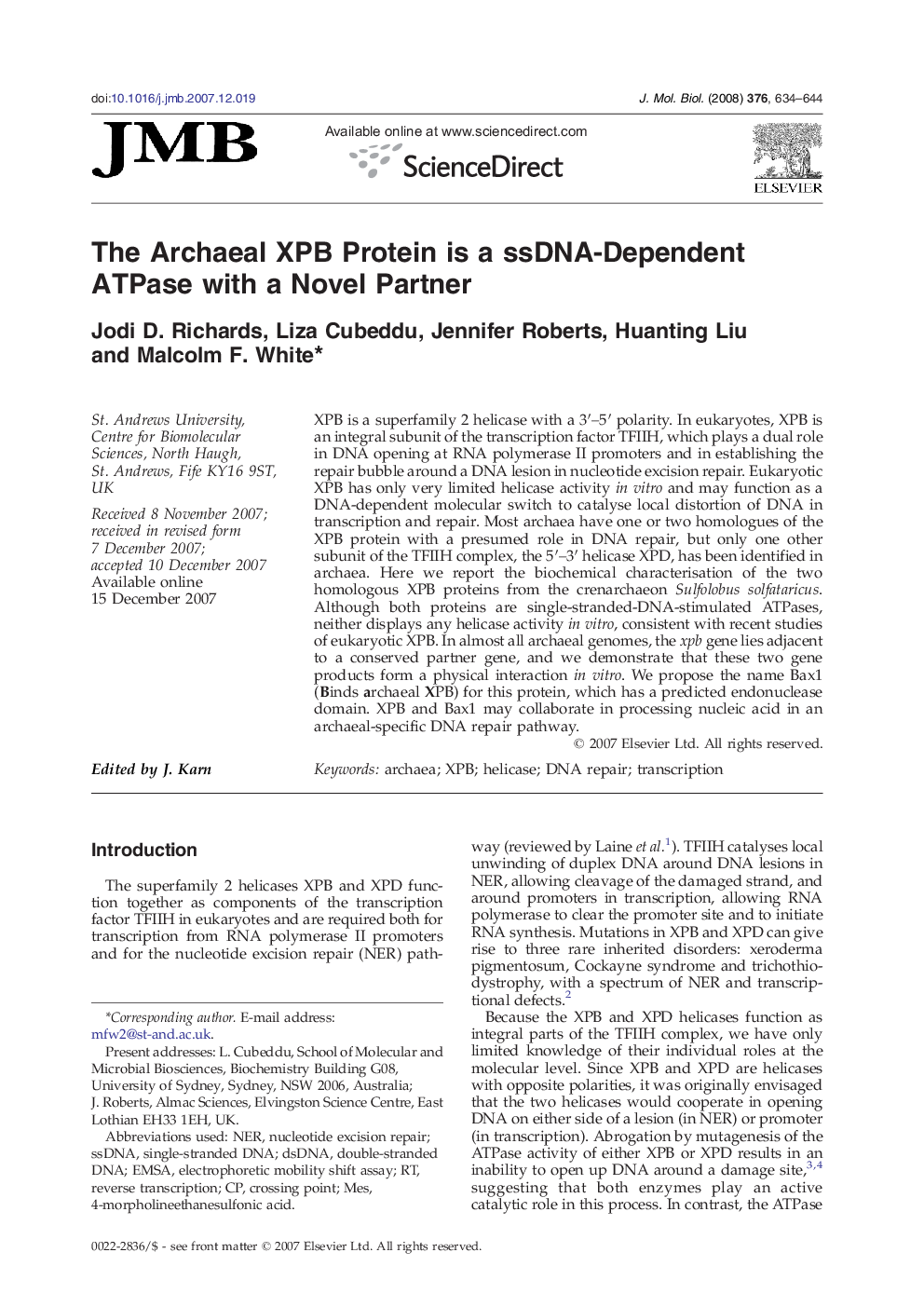| Article ID | Journal | Published Year | Pages | File Type |
|---|---|---|---|---|
| 2187942 | Journal of Molecular Biology | 2008 | 11 Pages |
XPB is a superfamily 2 helicase with a 3′–5′ polarity. In eukaryotes, XPB is an integral subunit of the transcription factor TFIIH, which plays a dual role in DNA opening at RNA polymerase II promoters and in establishing the repair bubble around a DNA lesion in nucleotide excision repair. Eukaryotic XPB has only very limited helicase activity in vitro and may function as a DNA-dependent molecular switch to catalyse local distortion of DNA in transcription and repair. Most archaea have one or two homologues of the XPB protein with a presumed role in DNA repair, but only one other subunit of the TFIIH complex, the 5′–3′ helicase XPD, has been identified in archaea. Here we report the biochemical characterisation of the two homologous XPB proteins from the crenarchaeon Sulfolobus solfataricus. Although both proteins are single-stranded-DNA-stimulated ATPases, neither displays any helicase activity in vitro, consistent with recent studies of eukaryotic XPB. In almost all archaeal genomes, the xpb gene lies adjacent to a conserved partner gene, and we demonstrate that these two gene products form a physical interaction in vitro. We propose the name Bax1 (Binds archaeal XPB) for this protein, which has a predicted endonuclease domain. XPB and Bax1 may collaborate in processing nucleic acid in an archaeal-specific DNA repair pathway.
